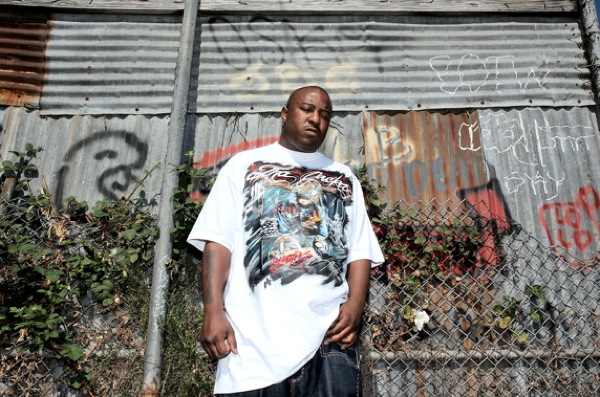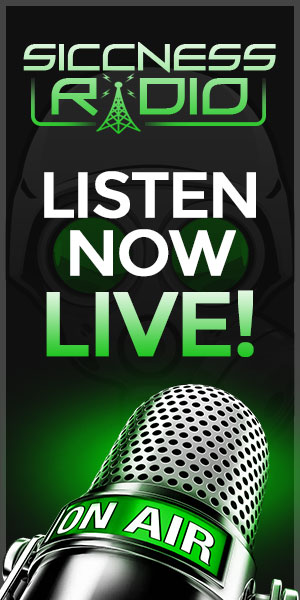The 50 Most Slept-On Rappers of All Time | Complex
48. Andre Nickatina
From: San Francisco, CA
Signature Song: Andre Nickatina “Smoke Dope and Rap” (1993)
A hero in his native Fillmore District of San Francisco, as well as a regional star throughout the West Coast, Andre Nickatina is known to most as the artist behind crossover cult hit “Ayo for Yayo,” even though the song is more of a feature for fellow San Franciscan San Quinn. But Nickatina’s catalog is deep, with two decades in the business and a career’s worth of classic, unusual music.
Initially known as Dre Dog, Nickatina’s first two albums both made some noise on Billboard. After his 1997 name change he released a series of records that would develop his cult fanbase, beginning with that year’s Cocaine Raps, 1998’s Raven in My Eyes. and 1999’s Tears of a Clown. He was also a significant collaborator, releasing several records with San Fran rapper Equipto and helping launch the career of the Mob Figaz with the flawless Mob Trial compilation.
An unapologetically louche rapper with an eccentrically mannered flow, Nickatina’s unusual musical choices are epitomized on his 2003 album Conversation With a Devil, when he first transitioned from Fillmore rap scene mainstay to dorm room stoner eccentric. The playful opening title track sets the stage for a record that alternates between Ren Faire production and bagpipes, a perverse, oddball sense of humor, and moments of genuinely intense revelation, like the harrowing morality tale, “Soul of a Coke Dealer.”
43. Casual
From: Oakland, CA
Signature Song: Casual f/ Del tha Funkee Homosapien & Pep Love “Who’s It On” (1994)
In terms of pure rapping skills alone, the Hieroglyphics crew has earned its place in hip-hop history. Even though Del Tha Funkee Homosapien’s baritone makes him the most recognizable MC in the bunch, it’s Casual whose talents have always been equally clear, but sometimes overlooked. His influence runs deeper than you might think, too-you can find his face among other greats on the Midnight Marauders artwork. He might not ever top his 1994 debut, Fear Itself, but who cares? He’s given us a classic and a discography full of strong and diverse listens. Salute that man.
41. The Jacka
From: Pittsburg, CA
Signature Song: The Jacka f/ Andre Nickatina “Glamorous Lifestyle” (2009)
In the mid-1990s, C-Bo was a rising California gangster rapper. While his career slowed in the next decade, a group he helped introduce to the music industry would go on to transform Bay Area rap music. Although the Mob Figaz (a group consisting of Rydah J. Klyde, Husalah, Fed-X, AP-9 and The Jacka) were largely under the radar during Hyphy’s big moment in the mid-2000s outside of California, Jacka’s 2005 release The Jack Artist established that there was much more going on in the Bay than manic Rick Rock beats and kids being irresponsible with automobiles.
The Mob Figaz, by contrast, were more concerned with adding onto Cali’s street rap tradition and incorporating an East Coast influence; they had come of age in the late 1990s, when the Bay’s scene was widely considered to be faltering and New York was ascendant.
The Jacka in particular has a laid-back, smooth flow reminiscent of influences like Big Daddy Kane, Slick Rick, and Special Ed, mixed with the more militant West Coast influences of Kam and Ice Cube, filtered through his own conversion to Islam. He also had an unusual ear for beats, incorporating reggae samples and production that hearkened back to New York’s pop-rap peak in the early 2000s. From 2005 through 2009, he released a series of records, both solo and as a member of the Mob Figaz, culminating in 2009’s epic Tear Gas.
Most compelling was how he addressed violence, keeping his moral conscience intact while nonetheless remaining fundamentally a street-oriented artist. Unfortunately, the media backlash after Hyphy worked against his crossover; a subsequent lack of interest in Bay Area rap music remanded him to the post-Mac Dre touring circuit from the Bay to Kansas City.
22. Mac Mall
From: Vallejo, CA
Signature Song: Mac Mall “Sic Wit Tis” (1993)
Vallejo rapper Mac Mall is one of hip-hop’s most underrated talents because his star burned brightest in its earliest stages. His debut album, Illegal Business, was released on Khayree Shaheed’s Young Black Brotha label. (Khayree was also the album’s producer, and was responsible for much of the production on Mac Dre, Ray Luv and Young Lay’s LPs, as well as doing most of the beats on Vanilla Ice’s debut LP.) Mac Mall had other friends in high places; his single My “Ghetto Theme,” a hard-hitting narrative about the tragic realities of gang life, received a Tupac Shakur-directed video. “Sic Wit Tis” fell more in line with the album’s overall sound, its squealing production a perfect framework for Mac Mall’s fluent rap style.
The album moved 200,000 units independently, leading to a deal with Relativity Records. The label released his sophomore record, Untouchable in 1996; it reached No. 6 on the R&B/Hip-Hop charts and No. 35 on the Billboard 200. This would be Mac Mall’s biggest moment, both commercially and critically. He continued recording into the 2000s, but despite two of the most promising records in West Coast rap history, never achieved the level of success many expected.
6. Mac Dre
From: Vallejo, CA
Signature Song: Mac Dre “Feelin’ Myself” (2004)
Mac Dre’s story is most memorably chronicled in an episode of BET’s American Gangster series that was technically about the Pizzeria/Bank Robbery clique known as the Romper Room Gang. But since Mac Dre’s legend was the most compelling part of the story, the show’s producers focused on the rapper as their star, even though he was considered a tangential part of the gang’s criminal escapades (though it should be noted that he did bait police officers by name in song and mentioned the name of an informant in a jailhouse call to KMEL radio). But leaving all that other stuff aside, he was truly an amazing rapper. A charismatic, gifted lyricist with an incomparable sense of humor, Mac Dre became one of the biggest stars in California rap history.
After his release from prison in the late 1990s (he received a 5-year federal sentence when the FBI caught the Romper Room Gang planning a bank heist), Mac spearheaded the Bay’s hyphy movement and helped spread the scene on a touring circuit from California throughout flyover country, pushing to the East as far as Kansas City. To this day, Bay Area rap has a strong hold on sizable portions of the Midwest, largely thanks to his efforts. While many critics reduced “hyphy” to a buzzword for a production style and the antics of a few goofy teenagers, Mac Dre was interested in conveying the culture, the entire experience.
His music made it seem like life was a party—albeit one with a very real and dangerous underbelly, and he was the spiritual center of the entire movement, a pill-popping community elder who was as much a force of nature as a rapper. When he was murdered in 2004, he left behind a musical legacy that remains largely underappreciated-albums like Genie of the Lamp, Al Boo Boo and Ronald Dregan, despite their whimsical titles and album art, are impeccable projects that show the true strength of Mac Dre’s sound-a sound that’s still influential on records like Drake’s “The Motto.”
















Speak On It!